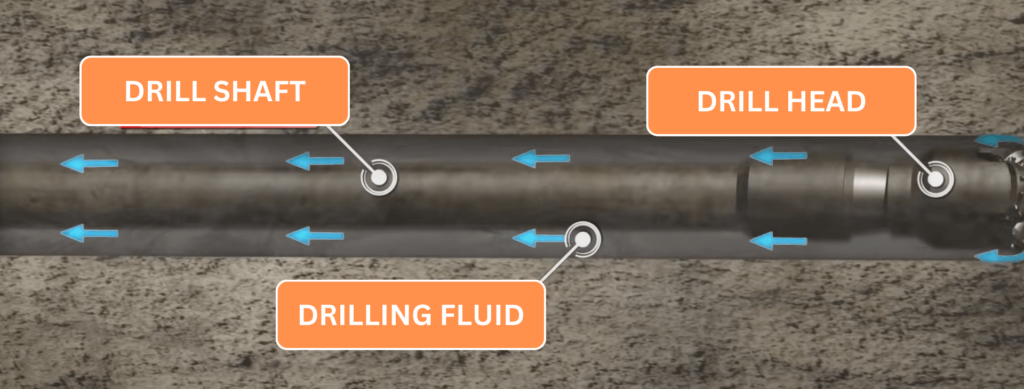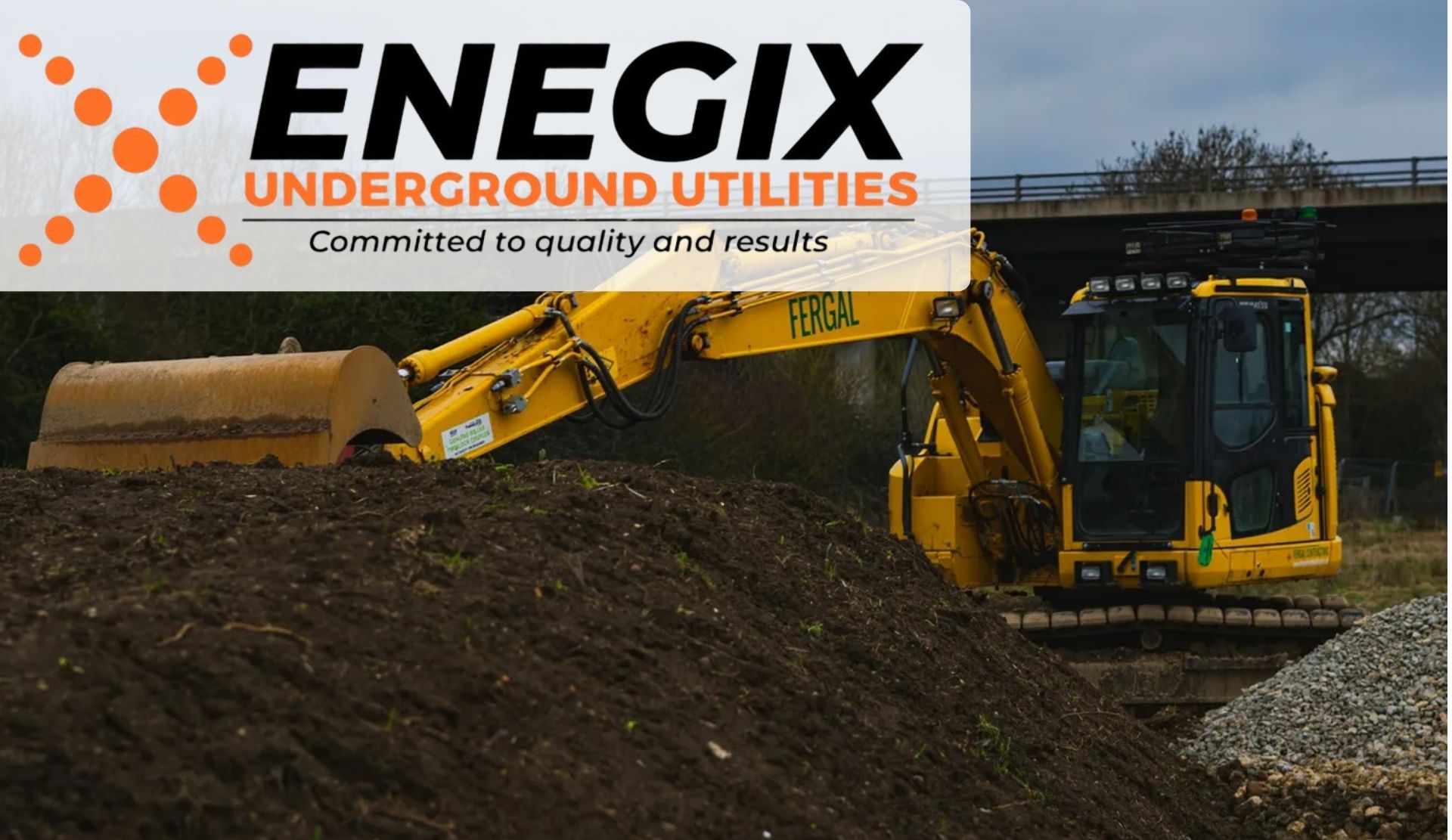
There are three primary stages of horizontal directional drilling: pilot bore, reaming, and pullback. But before I explain them, I will give you a brief definition of horizontal directional drilling to make sure you understand it well.
Horizontal directional drilling (HDD) is a method of installing pipelines from one surface location to another, without digging up the ground in between.
HDD is useful for crossing obstacles like rivers, roads, railways, or sensitive areas, where traditional trenching is not feasible or desirable.
HDD can benefit the oil and gas industry and other sectors, such as geothermal energy, water supply, environmental remediation, and civil engineering, by enhancing the efficiency and sustainability of their operations.

HDD has many benefits compared to conventional drilling methods, such as:
- Reducing the environmental impact and the drilling costs by avoiding the need for multiple surface locations or offshore platforms.
- Improving the recovery factor and the productivity index of the well, and reducing the water production and the gas coning.
- Enhancing the well placement and the reservoir contact by enabling complex well trajectories and geosteering.
However, HDD also has some challenges, such as:
- Requiring careful planning and execution, as well as specialized equipment and personnel.
- Involving various technical and operational risks, such as borehole instability, steering control, hole cleaning, and well intervention.Depending on various factors, such as the diameter of the product pipe, the soil or bedrock conditions, and the drilling equipment capabilities.
3 primary stages of Horizontal Directional Drilling
Pilot Bore: The First Stage of HDD
The pilot bore is the first stage of Horizontal Directional Drilling, where a drill rig, a drill bit, a drill pipe, and a tracking system are used to drill a small-diameter hole along a predetermined path from the drill rig entry location toward the exit location on the far side of the crossing.

The drill bit is attached to the drill pipe, which is pushed and rotated by the drill rig. The tracking system is used to locate the position and orientation of the drill bit, and to transmit steering commands to the drill rig operator.
The role of drilling fluids, which are a mixture of water and bentonite clay, is to remove the cuttings, stabilize the bore, cool the cutting tools, and lubricate the pipe string.
Drilling fluids are continuously pumped through the drill pipe to the cutting tools, where they mix and entrain the soil or bedrock cuttings. The fluid and cuttings mixture flows back to the drill rig location, where it is transferred to a separation plant to remove the cuttings and recycle the fluid component for reuse.
Steering adjustments are made by the drill rig operator to maintain the design alignment, which is usually a smooth curve that minimizes the stress and strain on the product pipe.
Steering adjustments are done by changing the angle and direction of the drill bit, using either a bent sub or a rotary steerable system. A bent sub is a short section of pipe that has a slight bend near the drill bit, which creates a deviation when the drill pipe is rotated.
A rotary steerable system is a device that can change the direction of the drill bit without stopping the rotation of the drill pipe, using either mechanical, hydraulic, or electronic mechanisms.
The pilot bore is completed when the drill bit exits the ground surface on the far side of the crossing, which is confirmed by the tracking system and visual inspection. The pilot bore is typically smaller than the final bore diameter, and needs to be enlarged by reaming.
Reaming: The Second Stage of HDD
Reaming is the second stage of Horizontal Directional Drilling, where reaming tools of successively larger diameter are pulled from the exit location back towards the drill rig location, to enlarge the pilot bore to its final diameter to accommodate the product pipe.

Reaming tools are attached to the drill pipe, which is pulled and rotated by the drill rig. Reaming tools have cutting teeth or blades that scrape or cut the walls of the bore, creating a larger hole.
The purpose of reaming is to create enough clearance for the product pipe to be pulled into the bore without getting stuck or damaged.
Reaming also helps to smooth and stabilize the bore, and to remove any remaining cuttings or debris. Reaming also uses drilling fluids to assist in the cutting, stabilization, cooling, and lubrication processes.
The number and size of reaming passes depend on various factors, such as the diameter of the product pipe, the soil or bedrock conditions, and the drilling equipment capabilities.
Typically, the reaming diameter is about 1.5 times the diameter of the product pipe, to allow for some margin of error and safety. However, the reaming diameter should not be too large, as it may cause excessive fluid loss, borehole instability, or environmental impact.
The condition of the HDD bore is assessed by completing a swab pass, which consists of pushing or pulling a slightly smaller diameter reamer through the fully reamed bore from start to finish.
The swab pass is used to verify the integrity and alignment of the bore, and to remove any remaining cuttings or debris. The swab pass also helps to condition the bore for the pullback process, by creating a smooth and consistent flow of drilling fluids.
Pullback: The Final Stage of HDD
Pullback is the final stage of Horizontal Directional Drilling, where the fabricated product pipe is pulled from the pipe entry location towards the drill rig location, using the drill rig and the drill pipe.
Pullback is the most critical and challenging stage of HDD, as it involves the actual installation of the product pipe into the bore. Pullback also requires the most coordination and communication among the HDD crew and the pipe stringing crew.
The steps involved in preparing the product pipe for pullback are:
• Welding: Sections of product pipe are transported and positioned at the HDD exit location, where they are welded together to form a continuous pipe string. The welds are inspected and tested to ensure their quality and strength.
• Coating: Coatings are applied to the welds and the pipe surface to protect them from corrosion and abrasion. The coatings are also inspected and tested to ensure their adhesion and integrity.
• Testing: The product pipe string is pressure tested with water to ensure its leak-tightness and safety. The water is then drained and the pipe is dried and cleaned.
• Positioning: The product pipe string is placed on pipe rollers and lifted by cranes or side booms to support and position the pipe to match the angle of the bore where the pipe enters the ground surface.
The pipe rollers and lifting equipment also help to reduce the friction and the pullback force acting on the pipe.
The pullback process consists of attaching a swivel and a reamer to the end of the product pipe, and connecting them to the drill pipe, which is pulled by the drill rig.
The swivel allows the product pipe to rotate independently from the drill pipe, preventing any twisting or torque. The reamer acts as a guide and a backup for the product pipe, ensuring its alignment and clearance.
Drilling fluids are continuously pumped through the drill pipe and the reamer, to lubricate and stabilize the product pipe as it is pulled into the bore.
The HDD installation is complete when the product pipe reaches the drill rig location, which is confirmed by the tracking system and visual inspection. Final checks and surveys are completed on the installed product pipe, to verify its position, depth, and curvature. The product pipe is then connected to the rest of the pipeline system, and the HDD bore is sealed and abandoned.


Leave A Comment